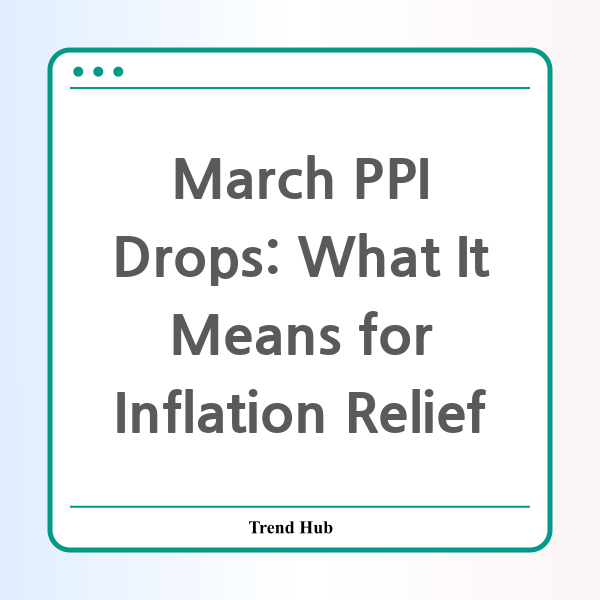* This website participates in the Amazon Affiliate Program and earns from qualifying purchases.

Are we finally seeing a shift in the inflation narrative? March brought unexpected news as the Producer Price Index (PPI) fell by 0.4%, a first in nearly five years. This wasn’t just a minor fluctuation; it was a significant indicator that could shape economic policies in the coming months.
The PPI, which measures the average change in selling prices received by domestic producers over time, is a critical gauge of inflationary pressures in the economy. For March, this seasonally adjusted decline came as a surprise to many economists who were anticipating a modest increase of 0.2%. More significantly, core PPI, which excludes the volatile food and energy sectors, also experienced a drop, reflecting broader economic conditions.
Let’s delve deeper into the factors contributing to this unexpected decline:
- Goods Prices Tumble: A remarkable 70% of the PPI decrease stemmed from a 0.9% fall in goods prices. This was primarily driven by an 11.1% drop in gasoline prices, which have a significant impact on overall consumer expenses.
- Easing Consumer Price Pressure: The consumer price index (CPI) mirrored these trends, indicating a slowing inflation rate. March recorded a 2.4% annualized inflation rate with a month-over-month decline of 0.1%, the first drop seen in years.
- Service Price Stabilization: Prices for services also exhibited a pullback, decreasing by 0.2%. This is particularly important as the service sector represents a substantial portion of consumer spending.
But what does this mean amidst President Trump’s aggressive tariff strategies? As tariffs against U.S. trading partners have started to ramp up, many analysts were worried about inflation accelerating. Instead, the latest reports suggest the opposite; they show a resilient economy managing to absorb shocks from ongoing trade tensions.
While inflation may still be above the Federal Reserve’s target of 2%, these figures highlight a significant slowdown in inflationary pressures that may ease the burden on consumers and influence Federal Reserve policy moving forward. Minneapolis Fed President Neel Kashkari indicated optimism regarding the CPI report, suggesting that there’s “a lot of good news under the hood,” despite the possible staleness of these figures in light of fast-evolving trade dynamics.
Moreover, with the PPI dropping more than expected, it’s reasonable to speculate that future monetary policy might lean towards maintaining lower interest rates for a bit longer. A stable inflation environment could allow for strategic investments and economic growth without the fear of rapidly rising prices.
As businesses evaluate their pricing strategies in response to these new indicators, consumers might just see a rare opportunity for relief in their day-to-day expenditures. Rising wages, alongside decreasing prices in several categories, are a promising combination as we navigate through uncertain economic waters.
In conclusion, the March PPI figures provide a silver lining in what has been an unpredictable inflation landscape. With easing prices and a controlled economic environment, consumers might finally experience a reprieve from the inflationary trends of the past few years. It remains essential, however, for stakeholders to remain vigilant and responsive to ongoing economic developments as new data emerge.
As we look ahead, the key takeaway is clear: understanding and responding to inflation indicators like the PPI will be crucial for both consumers and policymakers alike.
* This website participates in the Amazon Affiliate Program and earns from qualifying purchases.